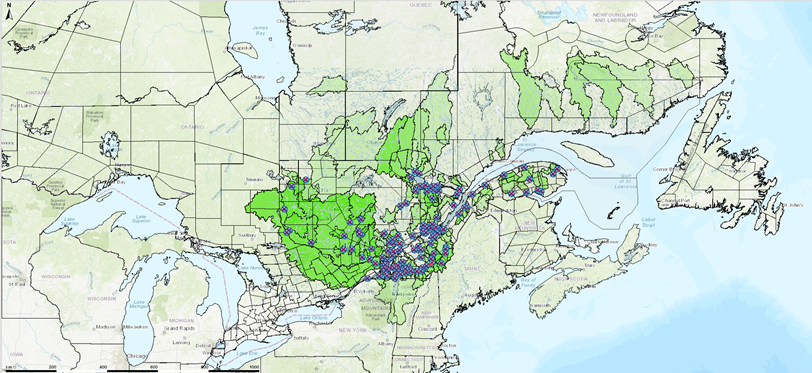Development of the Quebec National Flood Forecasting System - Delft-FEWS
Development of the Quebec National Flood Forecasting System
25 November 2021
The Quebec National Flood Forecasting System is used and developed by the flood forecasting team of Quebec’s Ministry of Sustainable Development, Environment and the Fight against Climate Change (MDDELCC). The system produces daily hydrological forecasts for over 100 locations in the province of Québec in Canada. Forecasts are used by Québec’s Government to coordinate flood-response actions and to support management of public dams.
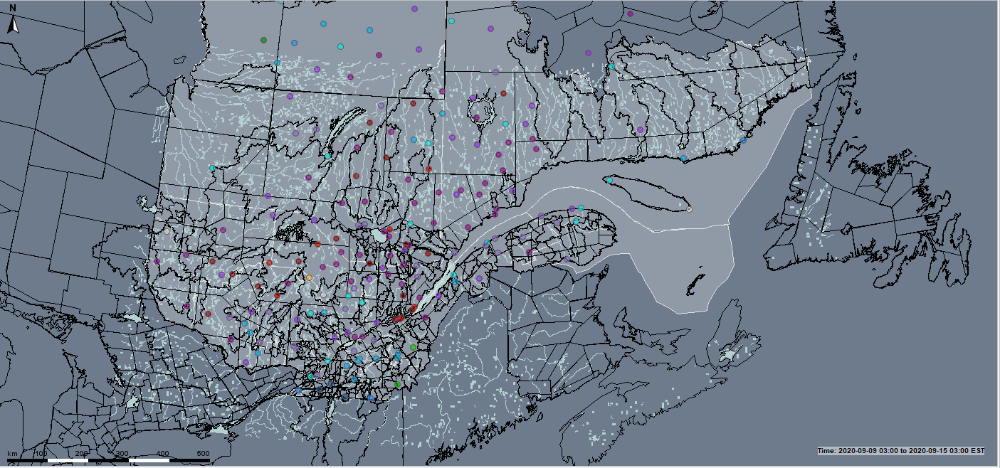
Flood forecasting in Québec started in the early 2000s with the development of an in-house system. Almost two decades later, increasing demands for forecasting along with the availability of new production methods motivated the switch to a new solution. Additional Numerical Weather Prediction (NWP) sources, improved snow data assimilation and ensemble hydrological forecasts are just a few examples of the new tools and features provided by the new Delft-FEWS system to the forecasters.
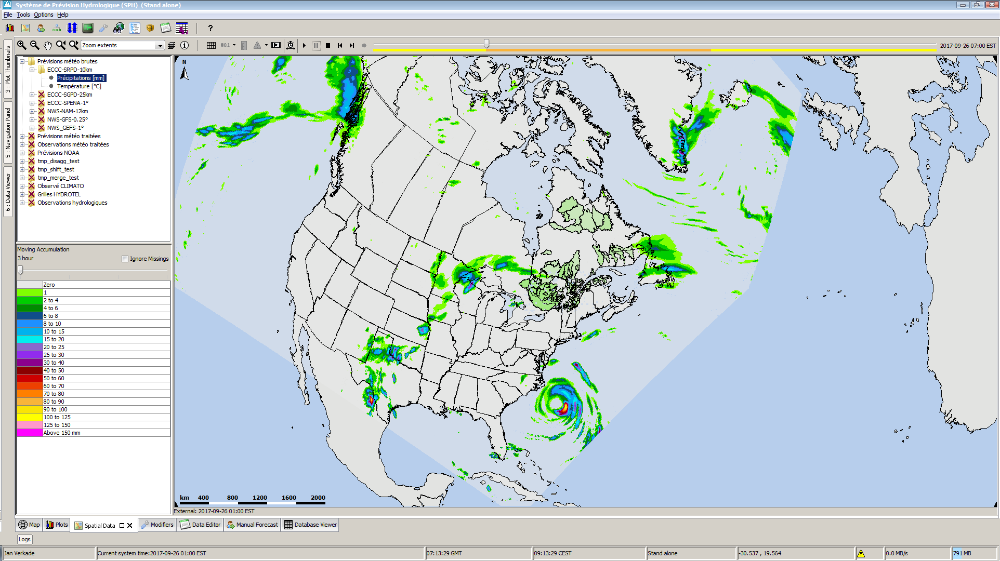
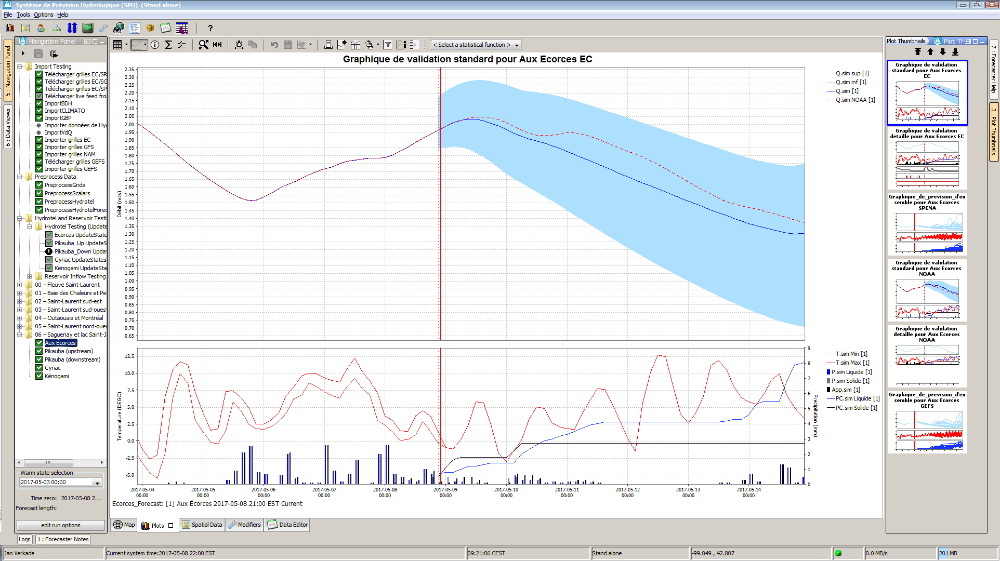
The system is managed and hosted by the Direction d’Expertise Hydrique within MDDELCC. It has been developed in close collaboration between Deltares and MDDELCC.

What are the main components?
The new system includes various numerical weather predictions (NWP) for both precipitation and temperature: Environment Canada’s regional, global and ensemble NWP products and their US equivalents (NAM and GFS). These weather forecasts force a chain of other models including a snow model, Hydrotel rainfall-to-runoff models and reservoir models. Additional products include post-processing based uncertainty estimates, and seasonal forecasts based on ESP.
What makes this Delft-FEWS application unique?
The present Delft-FEWS-system was completely configured by the client using the help of Deltares. In the initial stages of the project, relatively large emphasis was placed on training and working together. The result is a system where the client has full ownership and capabilities to change and maintain it. By now, the Ministry of Sustainable Development, Environment and the Fight against Climate Change are extremely skilled Delft-FEWS configurators: “We write computer programs a lot. This is no different.”
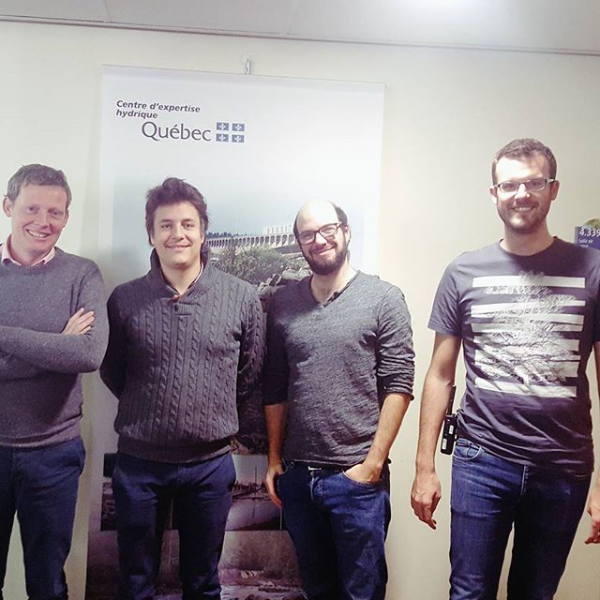
Another special feature is an operational forecast verification ‘sub-system’ that allows the continuous tracking of the quality of the forecasts, as expressed by various verification metrics, produced by the ensemble verification software EVS. Currently, the verification is done on a Stand-Alone system and eventually, the verification sub-system needs to be an integral part of the operational system. The Stand-Alone application is used to request the data from the Delft-FEWS Open Archive which contains the data from the operational system. This request is performed through the Delft-FEWS PI Webservices. The Stand-Alone application subsequently performs the verification and the resulting metrics are visualised in the operational system as well as stored in the Delft-FEWS Open Archive.
Last but not least, this Delft-FEWS system is used for the research of monitoring river ice.
What’s next for this Delft-FEWS application?
Having a forecast verification in place, the next step is to develop a way to manage and use the information that is generated by the verification sub-system. Based on the verification the forecast quality can be assessed and plans can be made to improve it.


